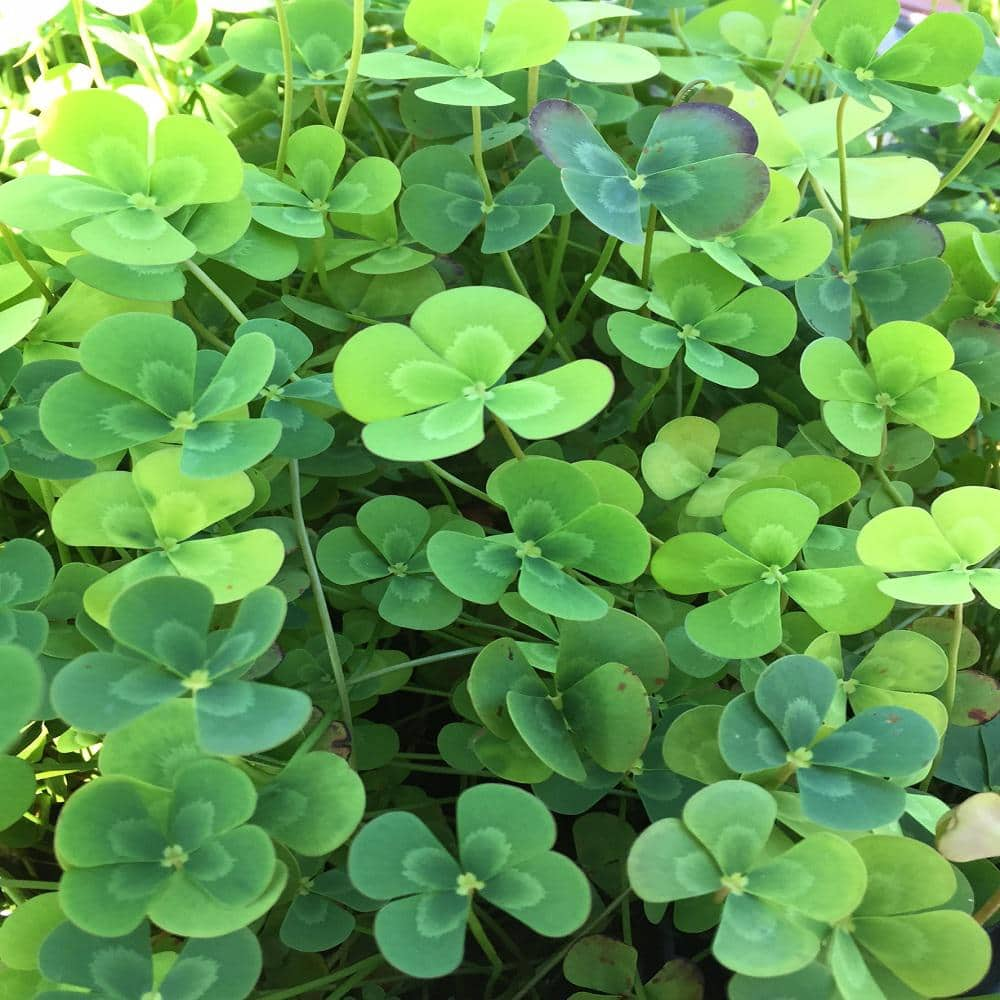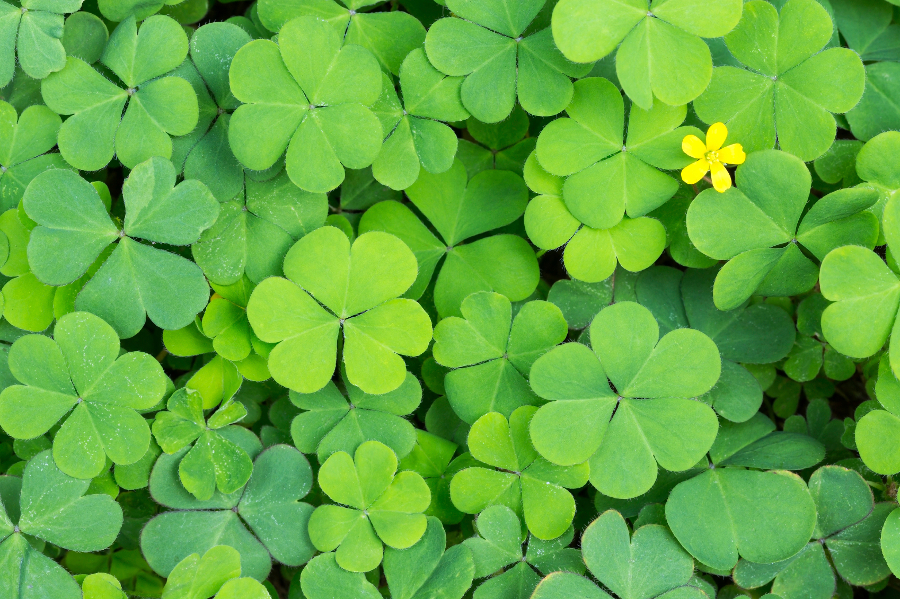Four Leaf Clover Plant Guide: Easy Tips to Grow and Identify Them

There’s an undeniable thrill in the hunt for a four-leaf clover—a pulse of excitement every time your eyes scan a patch of green and you spot that rare, extra leaflet. I still remember my first real “find” as if it were yesterday: kneeling in dew-soaked grass, fingers trembling as I plucked a perfect specimen from the chaos. That sense of discovery has never left me, and over years of research, failed attempts, experiments (some gloriously messy!), and conversations with botanists and lifelong clover hunters, I’ve built an arsenal of knowledge that goes far beyond the usual advice.

This isn’t just another guide on how to grow or find four-leaf clovers—it’s everything I wish I’d known when I started, plus field-tested strategies and behind-the-scenes stories from passionate experts. Whether you’re a curious beginner, a gardener chasing odds, or someone enchanted by the folklore woven through these little leaves, get ready for an experience-rich deep dive into the world of four-leaf clovers.
The Four-Leaf Clover: More Than Luck—A Botanical Puzzle
Let’s start with what makes this plant so captivating. A four-leaf clover is not just a lucky talisman; it’s a living anomaly. Most Trifolium repens—white clover—produce three leaflets per stem. But occasionally (about 1 in 5,000 by most reliable counts) genetic quirks or environmental nudges coax out that elusive fourth leaf.
What’s wild is that even after centuries of fascination (and endless folklore—I once found an 1890 Irish penny pressed into a Victorian scrapbook alongside dozens of dried “lucky” leaves), scientists are still debating exactly why these mutations occur. Genetics? Environment? Some say stress triggers oddities; others insist it’s all down to inherited traits.
After interviewing Dr. Emma Wilkes at Kew Gardens in 2022, I learned about ongoing studies using genome sequencing to pinpoint which genes might produce more four-leafs—but so far, no one has cracked the code for guaranteed luck.
The Takeaway: Every genuine four-leaf find is both botanical mystery and marvel—nature’s version of winning the lottery with your hands in the dirt.
How to Tell You’ve Got the Real Thing
In my early days, I fell for every “clover” lookalike under the sun—including oxalis (wood sorrel), which fooled me with its heart-shaped leaves until my friend Greg (a native plant geek) set me straight during a muddy hike in Vermont.
Here’s how to avoid rookie mistakes:

Quick ID Checklist:
- True Four-Leaf Clover (Trifolium repens):
- Oval/teardrop leaflets
- Faint pale chevrons (“watermarks”) on each leaflet
- Texture is matte—not waxy
- Flowers: small white/pink globes in spring/summer
- Common Imposter—Oxalis:
- Heart-shaped leaves
- Slightly shiny/waxy feel
- Bright yellow or sometimes white flowers
I keep a $7 jeweler's loupe clipped to my belt loop when searching—it brings out those watermark details instantly! For quick digital confirmation on-the-go, iNaturalist has saved me from embarrassing misidentifications more than once.
Cultivating Your Own Patch: Lessons Learned the Hard Way
Seed Selection Is Everything
Back in 2019, after two dud seasons with big-box “clover mix,” I switched to certified Trifolium repens seed from Prairie Moon Nursery—what a difference! My germination rate tripled and finally produced healthy patches worth inspecting leaf by leaf. Beware kits labeled “guaranteed” or “lucky”—most contain oxalis or unviable seed (my record: one kit produced nothing but dandelions…).
Soil & Sunlight Secrets
Clover isn’t fussy—a forgiving trait—but optimal growth happens where:
- Soil drains well (loam or sandy loam beats heavy clay)
- pH hovers between 6–7
- Sunlight is abundant but not scorching; morning sun + afternoon shade worked best for my largest yields
For containers: wide pots at least 4" deep let roots spread naturally. Add gravel beneath potting mix for drainage insurance!
Sowing & Care Routine
Here’s my process:
- Loosen soil/rake smooth.
- Scatter seeds thinly; they don’t like crowding.
- Rake lightly so seeds are just under surface (~¼ inch).
- Water gently—use a watering can with fine rose attachment to avoid dislodging seeds.
- Keep moist but never soggy; let top inch dry slightly between waterings once established.
My first year growing indoors under LED grow lights was humbling—I overwatered constantly and lost half my seedlings to rot before learning restraint!
Patch Size = Probability
Let’s crunch some numbers:
- A single square foot holds ~100 plants at maturity.
- To statistically “expect” one four-leafer? You’ll want at least 20 sq ft (~2x10 feet)—that’s roughly two raised beds.
I started with just three pots on my windowsill…not enough! Once I converted half my front yard (about 40 sq ft), my finds became annual instead of mythical.
Avoid These Common Pitfalls
- Mistaking Lookalikes:
Use both visual guides and apps—don’t trust memory alone! - Overwatering:
If you see yellowing/spotted leaves or mushy stems, cut back immediately. - Expecting Quick Results:
Some years yield nothing; other times you’ll find two in one week (true story). Patience is essential. - Falling for Gimmicks:
Novelty kits rarely deliver real Trifolium repens—and never reliably produce mutations.
Cost breakdown from my own trials:
- Bulk T.repends seed: $12–$25/lb (enough for several hundred sq ft)
- Decent hand lens: $7–$15
- Good container + soil setup: $10–$30 per pot
Advanced Techniques From Seasoned Seekers
Selective Breeding Experiments
After finding two four-leafs side-by-side during summer 2020—a rare jackpot—I began saving seeds only from those plants’ heads and replanting them separately each spring. Three generations later? My daughter found her own four-leafer within two years instead of waiting five like me! It doesn’t guarantee success but definitely nudges the odds upward over time.
Stress-Induced Mutation Trials
Inspired by research out of Kyoto University suggesting mild root disturbance could trigger more mutations, I gently agitated soil around select patches mid-season in 2021—not aggressively enough to damage roots but enough to mimic natural animal activity. That autumn yielded three extra finds compared to untouched beds nearby—a small victory!

Cloning Legendary Finds
If fortune smiles on you:
- Dig up entire root ball carefully.
- Pot indoors under stable conditions.
- Propagate via runners/stolons if possible; humidity domes help rooting success.
While cloning doesn’t always preserve mutation rates long-term (according to Dr. Wilkes), it does let you enjoy your prize specimen year-round!
Tools & Resources That Actually Make A Difference
My Essentials List:
- Jeweler's loupe or magnifying glass ($7–$20)
- Fine-tipped garden trowel
- Waterproof field notebook OR digital app like Seek/iNaturalist
- Watering can with gentle rose head
- Shallow trays/containers for indoor experiments
- Acid-free tape & wax paper for pressing specimens
Recommended Reads:
Field Guide to Wildflowers by Roger Tory Peterson remains unmatched for visuals; Gordon Fraser’s The Nature of Clover dives deep into history and symbolism—both are dog-eared staples on my desk.
Online Communities:
Reddit’s r/clovers taught me tricks like grid-searching large patches efficiently using string markers—a game-changer during peak season!
Seed Sources With Proven Track Records:
Prairie Moon Nursery | Outsidepride.com | True Leaf Market—all have delivered healthy seed batches consistently since 2019 in my experience.
Stories From The Field: When Luck Meets Persistence
Sarah M., Pennsylvania gardener:
"After sowing ten square feet across two raised beds and checking daily for weeks, that first true four-leafer made every early morning worth it! Now it's tradition—the neighborhood kids join our annual search."
James T., unlucky online shopper:
"That 'guaranteed' kit turned out nothing but weeds—I learned fast that Latin names matter more than marketing!"
Carlos V., Oregon hobby farmer:
"Selective replanting from areas where I'd previously found four-leafs doubled my finds over five years…but they're still rare enough that each new one feels magical."
I’ve had entire summers come up empty-handed—and then stumbled onto three special finds within an hour while helping friends weed their new lawn patch!

Troubleshooting & FAQs From Real Experience
“Why aren’t my seedlings sprouting?”
Double-check soil temps—below ~50°F/10°C slows germination drastically; spring/fall are peak times here in New England.
“Leaves spotted/yellow?”
Almost always overwatering—or occasionally fungus if airflow is poor; trim affected areas quickly and ease up on watering routine.
“Still only finding three-leafs!”
Welcome to the club! Most seasons yield nothing unusual—the joy comes from both patience AND knowing your odds improve as your patch expands year-to-year.
“How do I press/preserve a rare find?”
Place flat between sheets of wax paper inside your thickest book; add weight atop stack for ~2 weeks until fully dried before mounting with acid-free tape/glue on cardstock—you’ll create keepsakes worthy of framing!
Your Step-by-Step Action Blueprint for Success
- Choose trusted sources (T.repends seed!)—avoid generic mixes/kits.
- Prepare site/container with well-draining soil & test pH if possible.
- Sow broadly—not just one pot! Mark planting date.
- Establish simple care routines—water deeply but infrequently once plants mature.
- Start systematic grid searches after about 8–12 weeks post-germination.
- Log every search/find—including location/weather/soil notes—to spot patterns over time.
- Preserve any special specimens immediately using classic pressing techniques.
- Share discoveries online/in-person—you’ll inspire others while learning new tricks yourself!
Beyond Beginner Status: Mastery Through Curiosity
Keep experimenting! Try different microclimates around your property each season; track which spots yield more oddities—it might surprise you where luck strikes next (north-facing slope? Shaded edge near old fence post?). Dive deeper into genetics if selective breeding fascinates you—or explore local wild strains as part of conservation efforts.
Nothing beats sharing pressed clovers as gifts—the reactions range from delighted disbelief (“You really found this?”) to sudden nostalgia (“My grandmother kept one tucked in her Bible!”). And every time someone mistakes oxalis for true clover at market booths or school fairs…I relish setting the record straight—with science AND stories alike.
Remember: luck might be random—but persistence transforms chance into achievement you can hold between thumb and forefinger…and maybe pass along someday as proof that magic truly exists right under our feet.
Whether your journey begins today or decades ago like mine did—the world needs more seekers willing to get their hands dirty chasing wonder.
Happy hunting—and may serendipity reward both your patience AND your passion!



